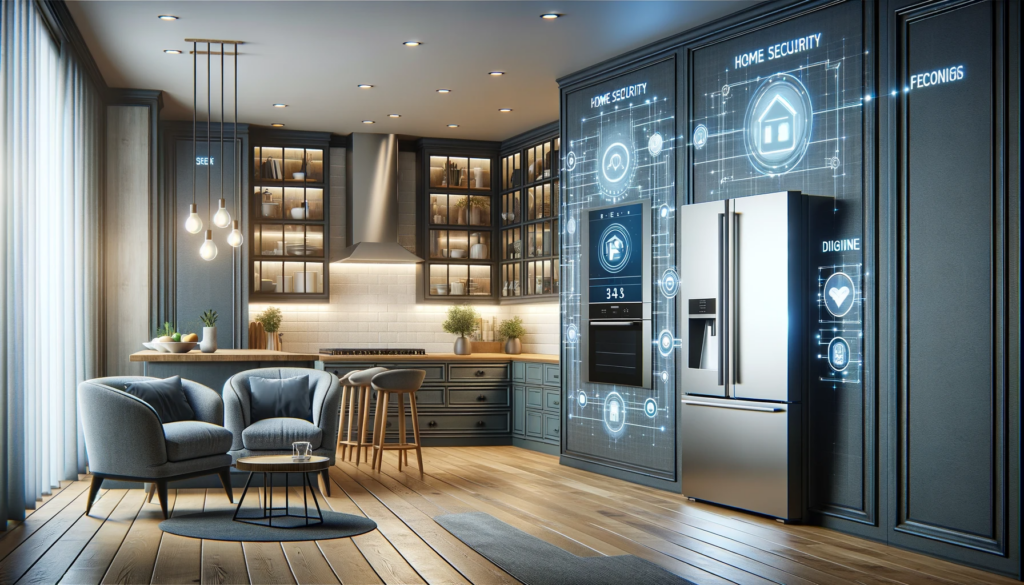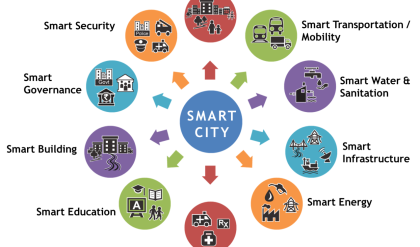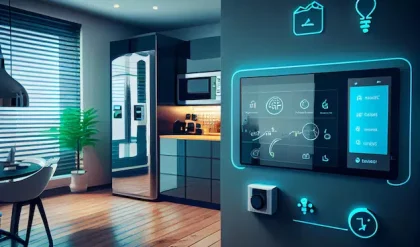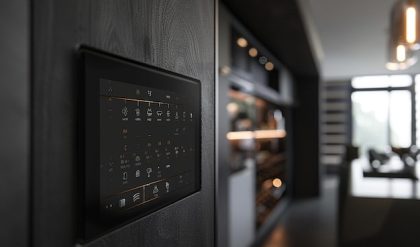
The Ultimate Guide to Smart Home Security Services: Fortress of the Future
The modern home isn’t just bricks and mortar; it’s a nexus of interconnected devices, a digital ecosystem demanding a new approach to security. Gone are the days of relying solely on a creaky old alarm system and a “Beware of Dog” sign. Today’s homeowner deserves a smart, adaptable, and intuitive security system, a veritable fortress of the future. This guide navigates the exciting world of smart home security, empowering you to choose the perfect system for your needs.
Beyond the Basic Burglar Alarm: Unveiling the Smart Home Security Revolution
Smart home security transcends traditional alarm systems. It’s about proactive protection, seamless integration, and unparalleled convenience. Forget fumbling with keypads; imagine unlocking your door with your phone, receiving instant alerts of suspicious activity, and even deterring intruders before they even approach. This is the promise of smart home security.
Key Components of a Robust Smart Home Security System:
-
Smart Locks: Eliminate lost keys and grant access remotely to family, guests, or service providers. Many offer keyless entry, auto-locking features, and even integration with your smart home system for automated routines.
-
Security Cameras: High-definition cameras, some with night vision and motion detection, provide real-time monitoring and recording. Cloud storage ensures footage is safe, even if your system is compromised. Consider features like two-way audio for communication with visitors or potential intruders.
-
Motion Sensors: These detect movement within your home, triggering alerts and recording events. Placement is key for optimal coverage and minimizing false alarms. Advanced sensors can differentiate between pets and intruders.
-
Smart Alarm Systems: These act as the central nervous system of your security network, integrating all components and providing a single point of control via a mobile app. Features like professional monitoring, siren activation, and police notifications offer comprehensive protection.
-
Smart Doorbell: A video doorbell allows you to see, hear, and speak to visitors remotely, even when you’re not home. Package theft prevention is a significant benefit, offering added peace of mind.
Choosing the Right System: A Personalized Approach
The perfect smart home security system isn’t one-size-fits-all. Your choice depends on factors like:
- Budget: Prices vary widely depending on the number of components and features. Consider professional installation costs versus DIY setups.
- Home Size and Layout: A larger home requires more sensors and cameras for optimal coverage. Complex layouts might benefit from professional installation to ensure seamless integration.
- Lifestyle: Consider your daily routines and travel habits. Those who frequently travel might benefit from professional monitoring services.
- Technical Proficiency: DIY systems are readily available, but professional installation might be preferred for complex setups or those lacking technical expertise.
Table: Comparing Popular Smart Home Security Systems
| System | Cost (approx.) | Professional Monitoring | Key Features | DIY Friendly? |
|---|---|---|---|---|
| SimpliSafe | $200 – $600 | Optional | Wireless, easy setup, good value | Yes |
| Ring Alarm | $200 – $400 | Optional | Integration with Ring cameras | Yes |
| ADT | $300+ | Included | Professional installation, comprehensive monitoring | No |
| Nest Secure | Discontinued | N/A | Integrated with Nest ecosystem | Yes |
Beyond the Basics: Enhancing Your Smart Home Security
- Smart Lighting: Automate lights to turn on and off at specific times or triggered by motion sensors, creating the illusion of occupancy even when you’re away.
- Smart Plugs: Control appliances remotely, allowing you to simulate activity or turn off devices in case of emergencies.
- Water Leak Detectors: Protect your home from water damage with sensors that detect leaks and alert you immediately.
- Smoke and Carbon Monoxide Detectors: Smart detectors provide early warning of potential hazards, safeguarding your family’s health and safety.
The Future of Smart Home Security:
The evolution of smart home security is ongoing. Expect to see greater integration with AI, improved facial recognition, and more sophisticated threat detection. The smart home security system of tomorrow will be even more proactive, predictive, and personalized, offering unparalleled peace of mind.
Investing in a smart home security system is an investment in your peace of mind and the safety of your family. By understanding the available options and carefully choosing the components that best suit your needs, you can transform your home into a secure haven in the digital age.

Additional Information
Deep Dive into the Ultimate Guide to Smart Home Security Services: An Analytical Perspective
A comprehensive guide to smart home security services needs to go beyond a simple product listing. It must delve into the nuanced aspects of security, offering a critical analysis of various technological components, service models, and the overarching implications for consumers. This expansion explores key areas often overlooked in basic guides:
I. Beyond the Buzzwords: Deconstructing Smart Home Security Technology:
-
Sensor Technology and its Limitations: The guide should analyze the strengths and weaknesses of various sensor types (motion, door/window, glass break, etc.). For instance, while motion sensors offer broad coverage, they are susceptible to false alarms triggered by pets or environmental factors. The guide should provide practical advice on sensor placement and configuration to minimize false positives. A comparison of different sensor technologies (e.g., PIR vs. ultrasonic) with their respective detection ranges and power consumption would enhance analytical depth.
-
Network Security and Vulnerabilities: A critical analysis of the network security protocols used by different systems is vital. Discussions on encryption methods (AES-128 vs. AES-256), vulnerability to hacking (e.g., exploiting weak passwords or unsecured Wi-Fi networks), and the impact of IoT device proliferation on overall network security are crucial. Relevant statistics on smart home breaches and data leaks could underscore the importance of robust network protection.
-
AI and Machine Learning in Security: The guide should explore the role of AI and machine learning in enhancing smart home security. For example, analyzing how AI algorithms differentiate between actual threats and false alarms, enhancing situational awareness, or predicting potential vulnerabilities based on user behavior patterns. This section could include case studies on how AI-powered security systems have prevented or mitigated real-world threats.
II. Service Models and their Implications:
-
Subscription-Based vs. One-Time Purchase: A comparative analysis of the cost-effectiveness and long-term implications of different service models is needed. Factors to consider include equipment costs, monthly subscription fees, professional monitoring fees, contract terms, and potential hidden charges. Real-world cost comparisons based on leading providers would provide valuable insights for consumers.
-
Professional Monitoring vs. Self-Monitoring: The guide should thoroughly evaluate the benefits and drawbacks of professional monitoring services. While professional monitoring offers immediate response to alarms and emergency dispatch, it comes with a recurring cost. Self-monitoring relies on user notification and self-response, offering cost savings but potentially sacrificing speed and efficiency in critical situations. The guide could present a decision-making framework to help consumers weigh the trade-offs based on their individual risk tolerance and budget.
-
Integration with other Smart Home Ecosystems: Interoperability between different smart home devices and platforms is a crucial factor. The guide should analyze the compatibility of various smart home security systems with other popular platforms (e.g., Google Home, Amazon Alexa, Apple HomeKit). The implications of choosing a proprietary system versus an open platform in terms of flexibility, future upgrades, and vendor lock-in should be discussed.
III. Beyond the Technology: Privacy and Ethical Considerations:
-
Data Privacy and Security: A dedicated section addressing data privacy is paramount. The guide should explain how different systems collect, store, and use user data. Discussions on data encryption, data retention policies, and compliance with relevant data privacy regulations (e.g., GDPR, CCPA) should be included. Examples of data breaches related to smart home security systems should serve as cautionary tales.
-
Ethical Implications of Facial Recognition and other AI-powered features: The ethical implications of incorporating advanced technologies like facial recognition into smart home security systems require careful consideration. The guide should discuss potential biases in algorithms, privacy concerns related to data collection and usage, and the societal impact of widespread adoption of such technologies.
By incorporating these detailed analyses and insights, the “Ultimate Guide to Smart Home Security Services” would transcend a simple product review and offer a comprehensive and valuable resource for consumers seeking to make informed decisions about their home security. The added depth and critical perspective will equip readers with the knowledge to evaluate different options effectively and choose the system that best fits their individual needs and circumstances.





